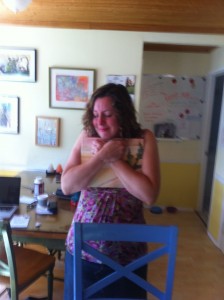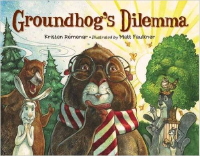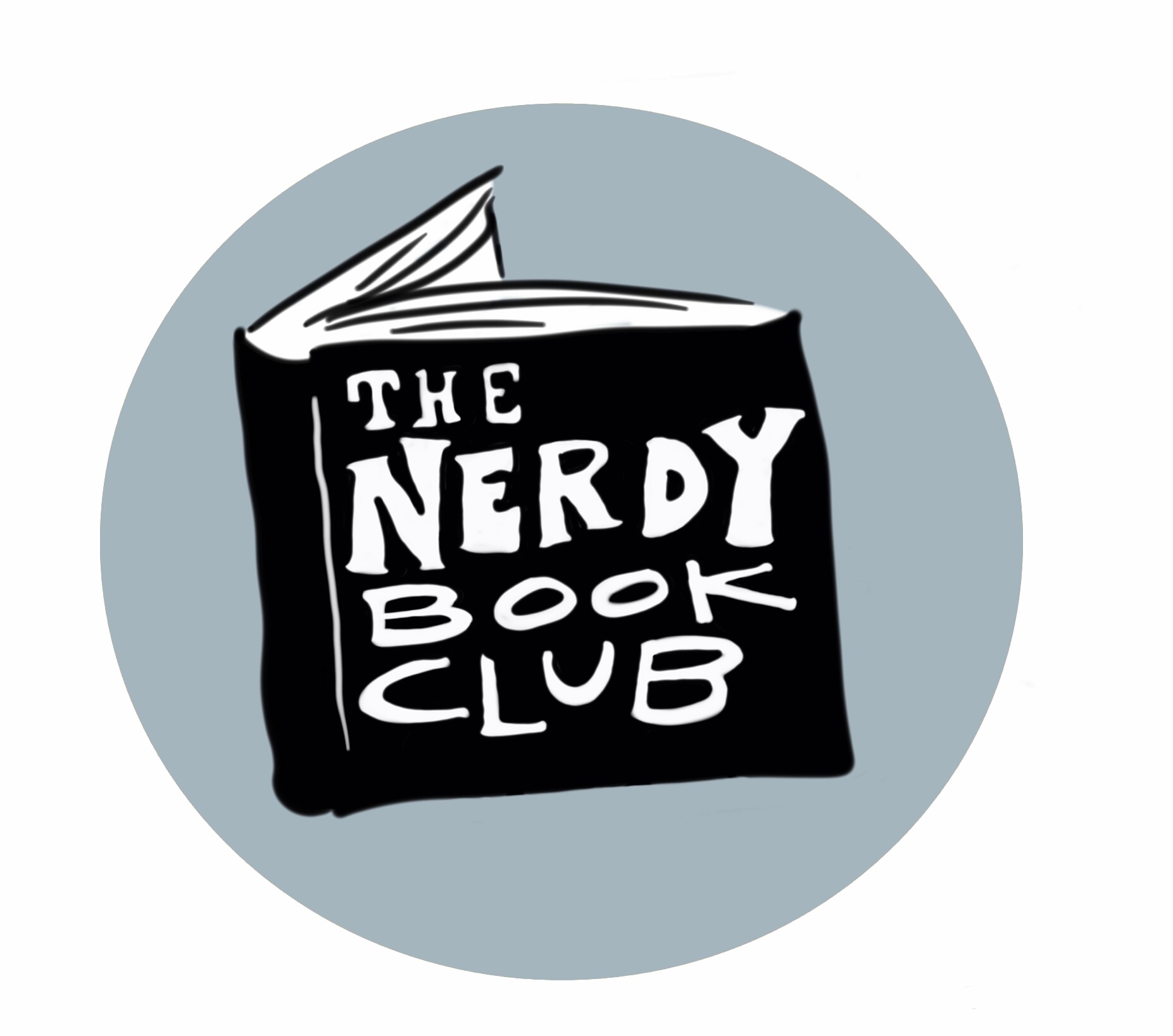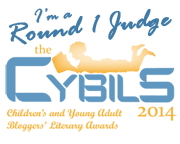When the Rain Came Down

I’ve been a fan of author/illustrator Leslie Helakoski for a long time. She’s incredibly creative, kind, talented, and she’s been a generous mentor for many years. I asked her about one of her newest picture books, WHEN THE RAIN CAME DOWN, illustrated by Keisha Morris, and this is what she told me.
“I grew up watching the ups and downs of the bayou next to my house. But as more and more oil companies marched into Louisiana, diverting the Miss. River and its silt, affecting the marshes and coastlines, we saw higher and higher water and bigger storms coming toward land unimpeded.
My book, WHEN THE RAIN CAME DOWN, is in part about Hurricane Katrina, which was followed by Rita in 2005. But flooding is not always due to a hurricane and flooding can happen in every state of the union.
Years after those storms, I was trying to write a story about a family that was over-the-top friendly and invited everyone over. But my mind kept coming back to people who opened doors to those in need during the floods.
As a writer, I was fascinated by up and down rhythm of it all. The rain coming down water rising up and then eventually, the people rising up, the sun rising up, communities rising up.
It made me cry. And write.
Since then, I’ve learned more about restoration projects along the Gulf Coast. You can find many of them on my website: helakoskibooks.com
What can we do?
Be conscious of planting native plants and grasses wherever you live. Use natural products, and support “green” organizations.
Do not buy cypress mulch –we need those trees to slow down storms.
Weather disasters often leave people needing help–and not only during floods. I hope kids will see the power we have and will one day reach out to others and say COME OVER.”
This beautiful book is essential not only for children who’ve lived through natural disasters but for all of us witnessing what is going on in our world. May we all remember to reach out and say COME OVER. Thank you, Leslie Helakoski!
Read MoreApril: Poetry, Earth Day, and April Pulley Sayre
April Pulley Sayre, a gift to the children’s literature community, passed away recently. In honor of her and her incredible legacy of picture books, I’m sharing a previous post. Look at all the ways you can use her books to teach in the most engaging ways!
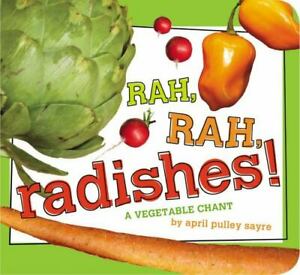
I had the pleasure of speaking at an early education conference where our theme was literacy and science. I brought stacks of books that tie into STEM (Science, Technology, Engineering, Mathematics) or STEAM (add Art) to share. Rather than just lecture all day, I led a session of “speed-dating” books: we’d spend a few minutes skimming a book and brainstorming ways to use it with students, share our ideas with the group, and pass the book along. This way, we had time to get our hands on over a dozen books and walk away with practical classroom applications. I was so inspired by the fantastic ideas the teachers generated! Here are a few ideas we came up with after reading Rah,Rah, Radishes! A Vegetable Chant by April Pulley Sayre:
Bring in vegetables found in the book. Sort the vegetables by color and by size.
Classify and sort vegetables by the parts we eat: root vegetables, leaves, etc. Read Tops and Bottoms by Janet Stevens as a tie-in text and talk about which vegetables would be “tops” or “bottoms” according to Hare.
Predict which vegetables will sink or float. Test predictions in a tub of water. Wash the vegetables and talk about textures.
Use the vegetables to make prints.
Compare and contrast with fruits.
Weigh and measure the vegetables. Use a vegetable as a measuring tool.
Take photos of vegetables and label them. Reread the book and have students hold up the corresponding photos.
Make a chart or a Venn diagram with the terms “raw” and “cooked”. Try some vegetables both ways and chart our preferences.
See what other vegetables besides potatoes can be delicious mashed (great for little ones to do the mashing!)
Bring in potatoes with “eyes” sprouting and bring in vegetable seeds. Compare seeds and sprouts, then plant!
Make an edible collage with vegetables.
Practice patterning skills like ABAB, etc. with bite-size veggies and eat when done.
Plan a field trip to a farmer’s market or invite a farmer to come to the classroom for more vegetable experiences.
If you’re interested in the list of science books I shared, please email me at kristenremenar AT gmail DOT com. If you like Rah, Rah, Radishes! A Vegetable Chant, be sure to check out Go, Go, Grapes! A Fruit Chant and Let’s Go Nuts! Seeds We Eat also by April Pulley Sayre. Hooray for early science!
Read MoreTry Food as a Way Into Reading
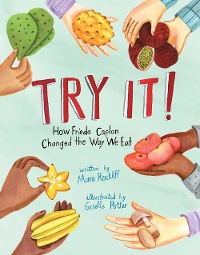
Learning is best done through experience, and food is definitely a way into learning for many of us. To tie reading in with some cool hands-on (and mouths-on) experiences, grab this biography, Try It! How Frieda Caplan Changed the Way We Eat written by Mara Rockliff and illustrated by Giselle Potter.
Apples, bananas, tomatoes, potatoes, these were almost the only things that Frieda Caplan saw when she went to her produce market. But Frieda wanted to try something different.
She brought mushrooms to sell. Everyone thought they were weird.
Until they tried them. Suddenly everyone wanted mushrooms. People even dubbed her the “Mushroom Queen”.
But she wanted more than just mushrooms.
She tried kiwi, jicama, sugar snap peas, cherimoya, champagne grapes. Red bananas, baby corn, star fruit! All kinds of new foods! She brought them all to her produce market.
And people tried them. And liked them!
A master teacher, Ed Spicer, taught his first graders that learning is all about trying. He encouraged his students to celebrate trying something new, even if they weren’t successful at first, even if they didn’t like it – that in itself is learning. You can create really memorable learning experiences by reading Try It! How Frieda Caplan Changed the Way We Eat and talking about new food.
Read this book with your kids/students/campers and talk about foods that seemed weird before you tried them. Are there foods they didn’t like before but now they do? You can make charts together of interesting foods and kids can put their names in the columns of “Yes, I like it” or “No, I don’t like it” or “I don’t know – I haven’t tried it yet”. If you have food magazines, kids can cut out foods they like and foods they want to try. Model for them, if kids start saying something is gross, that you used to think a certain food was gross but that part of growing up is that your tastes develop. Tell them about foods you used to think were weird that you now enjoy.
If you’re working with your own children or with children you know don’t have any fruit/vegetable allergies, you can bring in something like star fruit to try. I have researched allergies and it turns out for almost every food, someone is allergic to it. (Check out verywellhealthy.com – I never knew some kids aren’t bluffing about being allergic to broccoli!) To play it safe with a large group of kids, pick a cooked fruit, like applesauce. (Still, avoid anything with strawberries.) Do you think green applesauce is weird? What about pear sauce? Weird food is only weird until you try it!
Read MoreWhy I’ve Been Quiet for Six Months
MYSTERY OF LONG SILENCE EXPLAINED!
December, 2015:
My first two books, GROUNDHOG’S DILEMMA and
DRAW WITH A VENGEANCE (under the pen name, Helen Wrath), were published.
January, 2016:
I had a stroke.
I was in Boston at the American Library Association conference, attending for the first time not only as a librarian, but as a published author. I had a line at my booksigning event, dinner with a book promoter, brunch with my editor, coffee with an agent – and just before leaving for the airport, I lost all the peripheral vision on my right side. My husband called an ambulance and I spent four days at Tufts Medical Center recovering from an ischemic stroke.
I seemed to be slowly healing well, but in April I started having tremors and seizure-like episodes, up to eight a day. The four Michigan neurologists I saw were stumped.
Dr. Leung, the neurologist who treated me at Tufts, emailed to ask if he could interview me – he’s conducting research on young stroke survivors and I just barely still qualify as “young”! After the phone interview, this kind and generous doctor asked if I had any questions for him. I described the weird episodes, and he said, “If you’re ever in Boston, I’d be glad to see you as a patient.”
Off we drove to see Dr. Leung. Turns out I have epilepsy and most likely I’ve been having small seizures for years, maybe decades. (My friends used to tease me in high school about how I’d zone out. I was even diagnosed with a sleep disorder years ago because I’d have these odd, trancelike episodes that left me exhausted.) Having a stroke lowered my brain’s threshold for tolerating these electrical disturbances, hence the new tremors.
Now I’m on anti-seizure medication, and I’ve had only 3 small seizures in 15 days. If I hadn’t had the stroke while in Boston, I wouldn’t have seen Dr. Leung, and I might have gone on battling seizures without medication.
To make a long story longer, I am gratefully on the mend and will soon be bombarding your computer with more picture books that are just right for preschool – grade 3. Putting my entire life on pause while I healed made me realize how passionately I love what I do – writing and sharing great books for kids. Thanks for reading with me!
Read More




